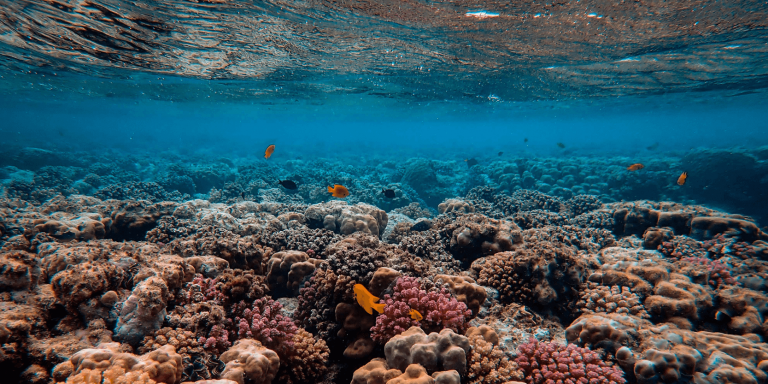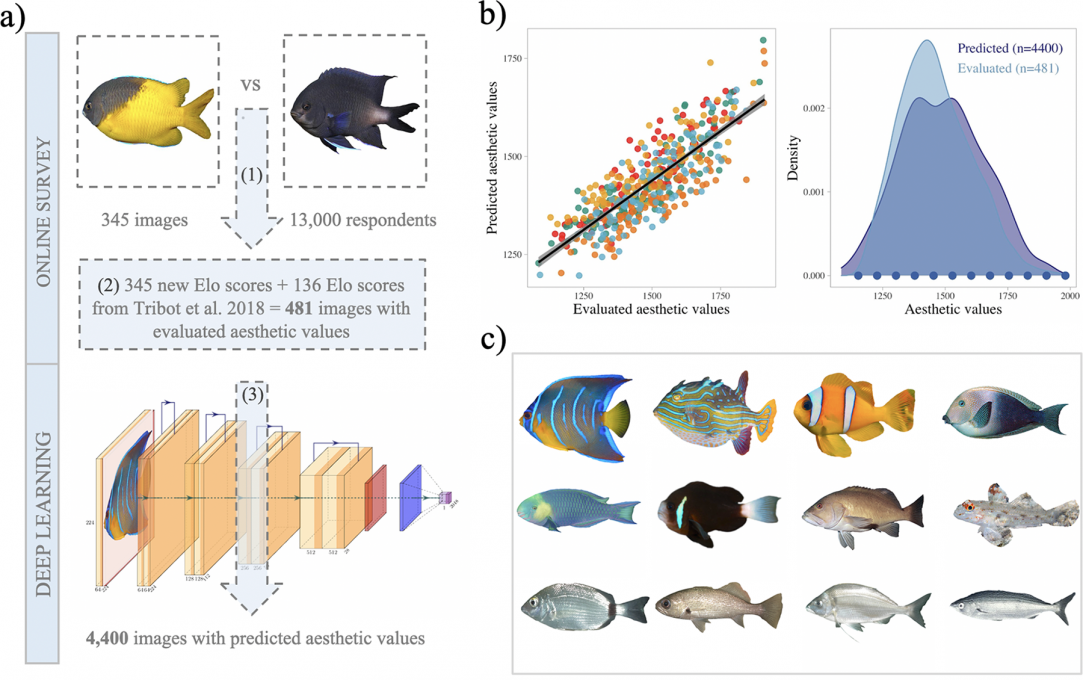
Preserving biodiversity is a major scientific and societal challenge to meet the challenges posed by climate change and contribute to the United Nations Sustainable Development Goals (SDGs). A team of researchers, including ecologist Nicolas Mouquet from the Laboratoire Biodiversité Marine, Exploitation et Conservation (Marbec), a CNRS/IRD/Ifremer/University of Montpellier unit, have studied the link between species beauty, perception and conservation using AI and deep learningand entitled their study: “The aesthetic value of reef fish is globally inappropriate for their conservation priorities”.
It was shown that not all species participate equally in the functioning of our ecosystem, but also that donations to save endangered species were more likely to be directed towards iconic, attractive and large body mass species, in most cases: elephant, polar bear, panda, Guiana dolphin, bonobo… For conservationists, species spotlight campaigns should be used with caution as they could skew conservation toward a limited range of species.
Coral reef and rock fish
When visiting an aquarium, we are all amazed by the colors of the tropical fish, by their original shapes: clownfish, butterflyfish, mandarinfish, angelfish… To know if there is a link between species beauty, perception and conservation, ecologist Nicolas Mouquet participated in a study in 2018 entitled ” Confronting species aesthetics with ecological functions in coral reef fishes” , this one had demonstrated that the least attractive coral reef fishes have a much higher functional richness than the species that seem to us the most beautiful.
An aesthetic score was given to more than a hundred species of coral reef fish. Eight thousand people had answered an online photographic questionnaire, consisting in choosing the photo of the fish they found the most beautiful for each pair of photos presented, the pairs being scored using the Elo algorithm. Not surprisingly, the fish perceived as beautiful are those with a strong contrast of luminosity, colors (yellow/blue for example) and rather rounded shapes, visual signals easy to decipher for our brain.
On the basis of these preferences, the researchers compared the functional richness, i.e. the amount of functional space filled, by groups of fish according to their perceived attractiveness.
Nicolas Mouquet explains:
“We obtained an aesthetic score for each species, which we correlated with the ecological characteristics of each (size, carnivorous or herbivorous diet, nocturnal or diurnal life, position in the middle or bottom of the water column…) “
Aesthetic values of species disconnected from ecological values
They were able to observe that the fish considered as beautiful were in reality fish that had evolved recently (between 20 and 10 million years ago), their bright colors allowing them to blend into the coral reefs, but that they only occupied a small part of the tree of life.
The fish considered less beautiful, which are by far the most numerous, have a more stretched body, blander colors and patterns that are much less easy to distinguish, like the bluish-gray fish living in the water column. The oldest ones have existed for about a hundred million years and cover a wider variety of ecological traits.
Nicolas Mouquet states:
“There are not a hundred ways to be beautiful and many ways to be “ugly”. Our perceptual biases lead us to find beautiful only a very small part of reef fishes. If this aesthetic filter guided our conservation efforts, it would not protect fully functioning ecosystems. “
Changing scale with AI and deep learning
This first study only involved a small number of species, so the researchers’ hypothesis that our perceptual biases (beauty or ugliness of species) could induce biases in species conservation policies, could not be validated. Using AI and deep neural networks, ecologists were able to scale up from over a hundred to… over 2,400 fish species studied. They published a new study titled ” Aesthetic value of reef fishes is globally inappropriate for their conservation priorities” in early June in the scientific journal PLOS Biology.
This time, 13,000 people responded to the photographic survey, generating a learning dataset for the NCC that allowed them to estimate the aesthetic value of 2,417 reef fish species with high predictive accuracy based on 4,881 species images.

The training dataset was obtained by combining the results of the 2018 study where 157 images of reef fish species were evaluated for aesthetic values and an online evaluation of 345 images (324 new plus 21 images present in the 1st study, to correct the values of the first 157 images). The researchers then applied a transfer learning procedure by refining a ResNet model,( ResNet 50), one of the most popular AI architectures, pre-trained on ImageNet.
Results of the study
The results highlighted that our aesthetic judgment, related to the human brain’s ability to process visual information, could generate a strong bias in our emotional engagement with coral fish, as suggested in the 2018 study.
The link to conservation status has been trickier to establish, but it seems that scientists are more likely to study species that they, too, consider beautiful or spectacular. The fish deemed most unsightly are, however, the most threatened by overfishing.
Nicolas Mouquet assures:
“Some of our perception biases are based on our attraction to bright colors, contrasts and rounded shapes, in particular. But we can eventually change this judgment by learning more about the species, the way they live and their role in the ecosystem. Just as, in contemporary art, learning and contextualization are often necessary to grasp the full beauty of a work. “
The researchers decided to continue their research and measure the research effort by counting the number of scientific publications published on each of the species considered, while simultaneously assessing the interest of the general public through the census of tweets and Google queries.
Sources of the article:
“The aesthetic value of reef fishes is globally inadequate to their conservation priorities”
Juliette Langlois, François Guilhaumon, Florian Baletaud, Nicolas Casajus, Cédric De Almeida Braga, Valentin Fleuré, Michel Kulbicki, Nicolas Loiseau, David Moulot, Julien P. Renoult, Aliénor Stahl, Rick D. Stuart Smith, Anne-Sophie Tribot, Nicolas Mouquet
Publication date: June 7, 2022
https://doi.org/10.1371/journal.pbio.3001640
Translated from Une étude analyse le lien entre le score esthétique attribué aux poissons coralliens et leur statut de conservation grâce aux CNN









